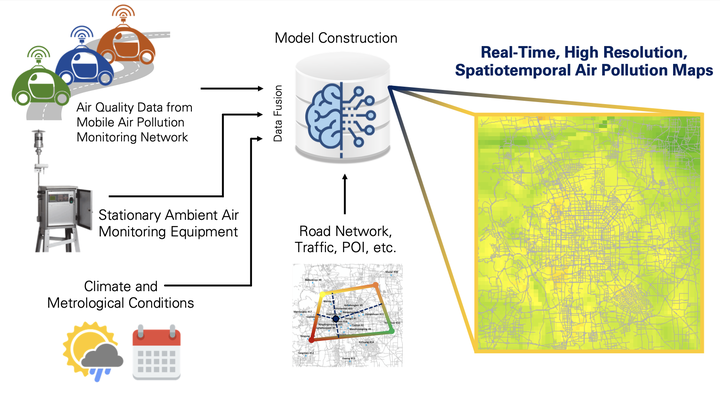Urban Air Pollution Mapping Using Fleet Vehicles as Mobile Monitors and Machine Learning

Abstract
Spatially explicit urban air quality information is important for developing effective air quality control measures. Traditionally, urban air quality is measured by networks of stationary monitors that are not universally available and sparsely sited. Mobile air quality monitoring using equipped vehicles is a promising alternative but has focused on vehicle-level experiments and lacks fleet-level demonstration. Here, we equipped 260 electric vehicles in a ride-hailing fleet in Beijing, China with low-cost sensors to collect real-time, spatial-resolved data on fine particulate matter (PM2.5) concentrations. Using this data, we developed a decision tree model to infer the distribution of PM2.5 concentrations in Beijing at 1 km by 1 km and 1 h resolution. Our results are able to show both short- and long-term variations of urban PM2.5 concentrations and identify local air pollution hotspots. Compared with a benchmark model that only uses data from stationary monitoring sits, our model has shown significant improvement with the coefficient of determination increased from 0.56 to 0.80 and root mean square error decreased from 12.6 to 8.1 μg/m3. To the best of our knowledge, this study collects the largest mobile sensor data for urban air quality monitoring, which are augmented by state-of-the-art machine learning techniques to derive high-quality urban air pollution mapping. Our results demonstrate the potential and necessity of using fleet vehicles as routine mobile sensors combined with advanced data science methods to provide high-resolution urban air quality monitoring.